History
Sicilian History is so fascinating because so much of its rich and varied history is still evident and accessible. The sites themselves tell the stories. So many remnants of the past remain throughout the beautiful and fertile island, no matter how many other things have changed.
Sicily saw many conquerors over time. Though each brought in their own codes and cultures and art and architecture, most integrated, at least physically, and/or added to what was already there. They didn’t diminish or erase the past. If you want to see it, all you have to do is somehow get to Sicily and look around. It’s all still there.
Elymians, Sicanians, and Sicels
In the first millennium BC, the Elymians, Sicani, and Siculi Sicels lived on the island we now call Sicily. Sicels are actually the people which the name of the island came from. {1}
Though there are spelling variations as well as variations on precise locations, the general regions they were in are as depicted in the map below.
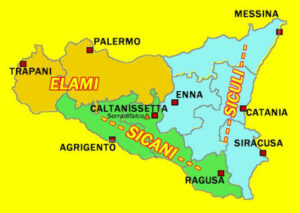
Phoenicians
At least by the 11th century BC, some Phoenicians had settled in the land now known as Sicily.
“The Phoenicians were master seafarers, and over the next few centuries, they established trading posts, and influence, around the shores of the Mediterranean. They introduced a written alphabet, precursor to the Greek version. They had contact with the native Elami, who used the Phoenician alphabet, but wrote in their native Elymian language, so that remnants of their written records have yet to be translated.” {2}
Greek
From the 8th – 7th centuries BC, the Greeks colonized Sicily and left many cultural contributions, quite a few of which can still be seen there today.
“English people do not realise that half of the history of Greece belongs to the Sicilian Greeks, that Syracuse was a larger city than ever Athens was, and that Syracuse was once the greatest city in the world…. If you want to understand ancient Greece, come to Sicily.” – Douglas Sladen, 1901
Examples of Greek sites in Sicily you can still visit include:
Agrigento – The Valley of the Temples
Cefalu – Temple of Diana
Syracuse – Greek Theatre, largest in Sicily
Taormina – Greek Theatre, 2nd largest
Roman
From 264 BC to 146 B.C. The Punic Wars between Rome and Carthage were fought.
“The Roman victories over Carthage in these wars gave Rome a preeminent status it would retain until the 5th century AD.” {3}
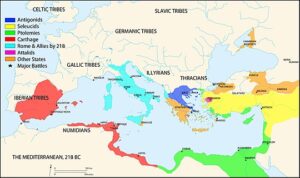
Germanic
Around 440 AD the Vandals and the Ostragoths took Sicily from the Romans as well as some other Roman lands, as the Roman empire diminished. That was until around 535 AD.
Byzantine
From around 535–554 the Gothic War between the Ostrogoths and the Byzantine Empire (the Eastern Roman Empire) was fought. The Byzantines won, and later joined it with Calabria to form The Byzantine Theme of Sicily.
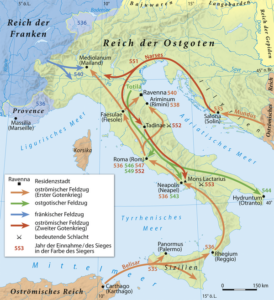
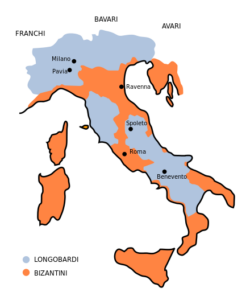
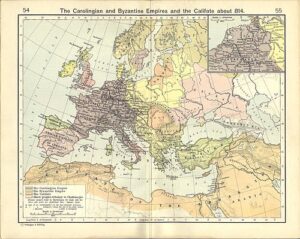
Muslim
827 – 902 marked the-Muslim invasion and conquest of Sicily.
From 902 to around 1070, there was Muslim rule in Sicily until conquered by the Normans.
Norman
From 1071 – 1130, a Norman state including Sicily and Malta and part of Calabria was known as the County of Sicily.
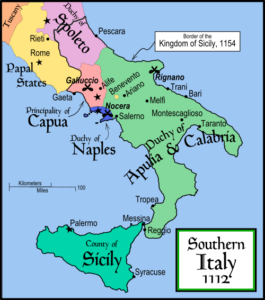
The Kingdom of Sicily
“The Kingdom was founded in 1130 by Roger II, belonging to the Siculo-Norman family of Hauteville. During this period, Sicily was prosperous and politically powerful, becoming one of the wealthiest states in all of Europe.”
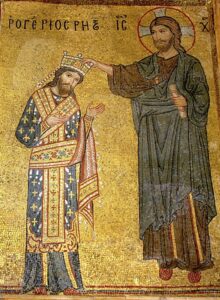
Coin of Roger II of Sicily
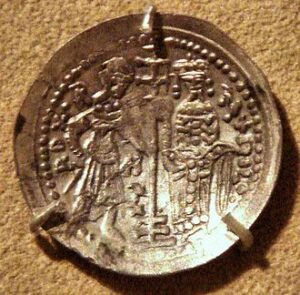
{1} https://en.wikipedia.org/wiki/History_of_Sicily
{2} http://www.conigliofamily.com/LaBeddaSicilia.htm
{3} https://en.wikipedia.org/wiki/Punic_Wars